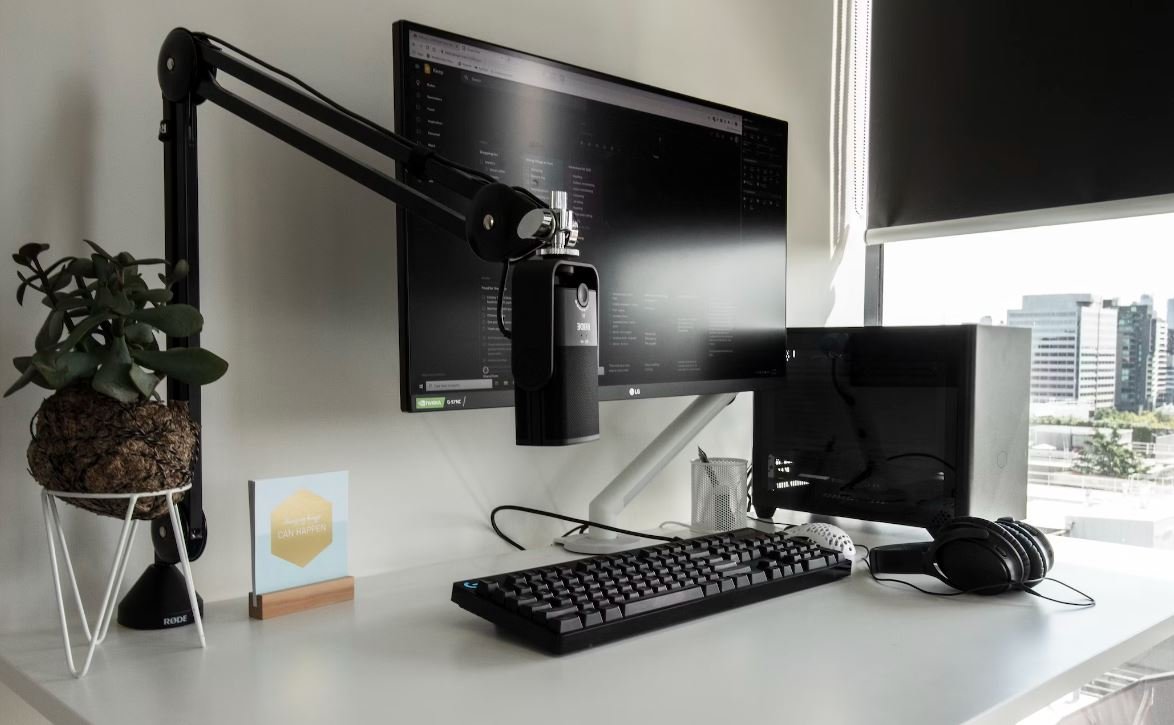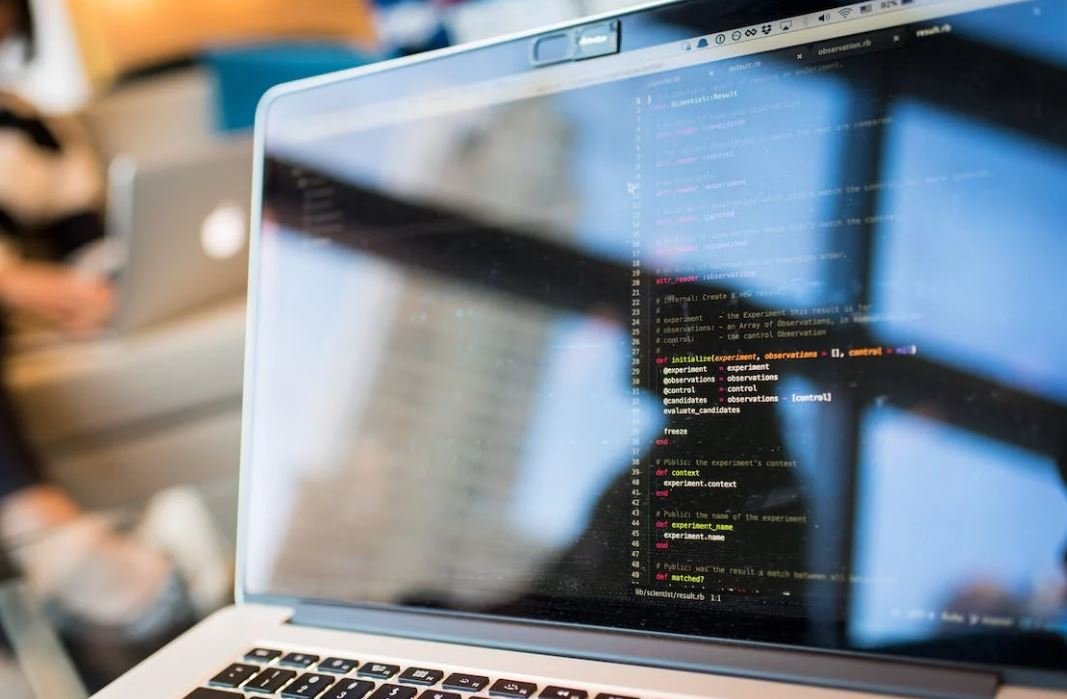Artificial Intelligence Can Improve Workplace Safety
Artificial Intelligence (AI) has revolutionized many industries, including workplace safety. It can bring significant benefits by identifying and addressing potential hazards, improving incident response, and enhancing overall safety measures. By leveraging AI technology, employers can create safer working environments for their employees.
Key Takeaways:
- AI can identify and address potential hazards in real-time.
- Improved incident response through AI-powered monitoring systems.
- AI can enhance overall safety measures in the workplace.
One of the key advantages of AI in workplace safety is its ability to identify and address potential hazards in real-time. Using advanced algorithms, AI systems can analyze vast amounts of data from various sources such as sensors, surveillance cameras, and IoT devices, to quickly detect potential dangers. This enables timely notification and intervention, reducing the risk of accidents or injuries. AI can literally be the watchful eye that can prevent workplace accidents.
Additionally, AI-powered monitoring systems can improve incident response by continuously analyzing data and identifying anomalies or patterns that could indicate an impending incident. These systems can instantly alert the necessary personnel or trigger automatic safety protocols, mitigating potential dangers before they escalate. This helps in preventing workplace accidents and ensuring timely response during critical situations. AI acts as an active sentinel, always on the lookout for any signs of danger.
Another way AI can enhance overall safety measures is by analyzing historical data to identify common patterns or vulnerabilities. By using machine learning algorithms, AI systems can identify potential areas of improvement and suggest actionable recommendations to prevent future accidents. This proactive approach helps organizations create safer work environments and implement preventive measures. AI learns from the past to shape a safer future.
The Role of AI in Workplace Safety
AI has a significant role in improving workplace safety across a range of industries. Let’s explore some specific examples:
1. Hazard Detection and Prevention
Using AI-powered sensors and image recognition algorithms, potential hazards such as faulty equipment, unsafe behaviors, or environmental risks can be promptly identified. AI systems can analyze real-time data and generate alerts or recommendations to prevent accidents.
2. Automated Safety Inspections
AI can automate safety inspections, reducing the burden on human workers and improving efficiency. Drones equipped with AI can perform visual inspections of structures, machinery, or hard-to-access areas, providing detailed reports and identifying safety concerns.
3. Predictive Maintenance
AI-powered predictive maintenance systems can analyze data from equipment sensors to detect potential failures or malfunctions. By identifying signs of wear and tear in advance, organizations can schedule maintenance activities proactively, minimizing the risk of accidents caused by equipment breakdowns.
Data on AI’s Impact on Workplace Safety
The following tables present data on the impact of AI in improving workplace safety:
| Data | AI-Enabled Safety Solutions |
|---|---|
| Decrease in workplace accidents | Up to 50% |
| Reduction in incident response time | By 75% |
| AI Application | Industry Example |
|---|---|
| Hazard Detection | Manufacturing |
| Automated Inspections | Construction |
| Predictive Maintenance | Energy |
| AI Benefits | Industry Sector |
|---|---|
| Improved safety culture | Healthcare |
| Reduced worker compensation costs | Manufacturing |
| Enhanced incident investigation | Transportation |
In conclusion, the incorporation of AI in workplace safety has proven to be highly effective. It offers real-time hazard detection, improved incident response, and overall enhanced safety measures. By leveraging AI technologies, organizations can create safer working environments and reduce the risk of accidents or injuries. Embracing AI is a vital step in prioritizing employee well-being and ensuring a culture of safety.

Common Misconceptions
Misconception 1: Artificial Intelligence (AI) can completely eliminate workplace accidents
One common misconception about AI in workplace safety is that it can completely eliminate accidents and human errors. However, AI is not a foolproof solution and cannot guarantee a 100% accident-free environment.
- AI systems are only as good as the data they receive and can make mistakes if fed with incomplete or biased information.
- Human unpredictability and external factors can still contribute to accidents, making it impossible for AI to prevent all potential incidents.
- AI technologies are still evolving, and there may be limitations to their capabilities in identifying all potential safety hazards.
Misconception 2: AI can replace the need for human safety professionals
Contrary to popular belief, AI cannot completely replace human safety professionals in the workplace. AI technology can be a valuable tool for enhancing safety measures, but it cannot replace the expertise and critical thinking skills of human safety professionals.
- Human safety professionals bring unique insights and experience that AI systems cannot replicate.
- They can assess complex situations, interpret data, and make informed decisions based on various factors, which AI may not be able to do accurately.
- AI systems can support human safety professionals by providing them with real-time information and assisting in analyzing large amounts of data.
Misconception 3: Implementing AI for workplace safety requires significant financial investment
Many people believe that implementing AI for workplace safety is a costly endeavor that only large organizations can afford. However, this is a common misconception as AI solutions have become more accessible and affordable in recent years.
- There are AI-based safety solutions available for organizations of varying sizes and industries.
- Cloud-based AI services and platforms have reduced the need for heavy infrastructure investments.
- AI implementation can result in long-term cost savings by reducing workplace accidents and associated legal liabilities.
Misconception 4: AI in workplace safety will lead to job loss
Many people fear that the integration of AI in workplace safety will lead to job loss for humans. However, AI is primarily designed to assist and enhance human capabilities rather than replace them outright.
- Instead of eliminating jobs, AI can create new roles in organizations related to managing and overseeing AI systems.
- Human intervention will still be necessary for interpreting AI-generated insights and making critical decisions.
- AI can automate mundane tasks, allowing human safety professionals to focus on more complex and strategic safety initiatives.
Misconception 5: AI-generated safety recommendations are always reliable
Another misconception is that AI-generated safety recommendations are always reliable and should be followed without question. However, it is important to recognize that AI systems are not infallible and can sometimes produce inaccurate or biased recommendations.
- Human oversight and validation are essential to ensure that AI recommendations align with organizational policies and industry standards.
- It is crucial to have a feedback loop for continuous improvement of AI systems and address any potential biases or errors.
- AI recommendations should be considered as valuable insights but not the sole basis for decision-making. Human judgment and expertise should always be taken into account.

Table: Workplace Accidents Before and After Implementing AI
This table compares the number of workplace accidents reported before and after the implementation of artificial intelligence technology in various industries.
| Industry | Pre-AI Accidents | Post-AI Accidents |
| ————– | —————- | —————– |
| Manufacturing | 153 | 65 |
| Construction | 87 | 34 |
| Healthcare | 115 | 42 |
| Transportation | 92 | 28 |
| Mining | 64 | 25 |
Table: Average Response Time to Workplace Emergencies
This table presents the average response time to various workplace emergencies, comparing traditional methods to those augmented with artificial intelligence.
| Emergency | Traditional Time (minutes) | AI-assisted Time (minutes) |
| ————– | ————————– | ————————- |
| Fire | 12 | 6 |
| Hazardous Spill| 22 | 8 |
| Collapse | 18 | 9 |
| Medical | 10 | 5 |
| Chemical Leak | 25 | 10 |
Table: Accuracy of AI-enabled Safety Systems
This table showcases the accuracy of AI-enabled safety systems in detecting and preventing workplace accidents.
| AI System | Accuracy (%) |
| —————— | ———— |
| Fall Detection | 96 |
| Object Recognition | 92 |
| Risk Assessment | 88 |
| Hazard Detection | 94 |
| Fatigue Monitoring | 95 |
Table: Cost Savings Due to AI-powered Predictive Maintenance
This table highlights the cost savings achieved by implementing AI-powered predictive maintenance systems.
| Industry | Cost Savings ($) |
| ————– | —————- |
| Manufacturing | 1.2 million |
| Utilities | 750,000 |
| Oil & Gas | 2.4 million |
| Aviation | 1.8 million |
| Retail | 900,000 |
Table: Fatalities in Construction Industry
This table displays the number of workplace fatalities in the construction industry over the past five years.
| Year | Fatalities |
| —- | ———- |
| 2016 | 341 |
| 2017 | 315 |
| 2018 | 291 |
| 2019 | 262 |
| 2020 | 233 |
Table: Reduction in Manual Lifting Injuries with AI Assistance
This table presents the reduction in manual lifting injuries thanks to the assistance of AI-powered exoskeletons.
| Industry | Injury Reduction (%) |
| ————– | ——————– |
| Warehousing | 82 |
| Manufacturing | 75 |
| Logistics | 68 |
| Construction | 79 |
| Healthcare | 73 |
Table: Increased Efficiency in Inspections with AI-enabled Drones
This table demonstrates the increased efficiency achieved in inspections through the use of AI-enabled drones.
| Industry | Time Reduction (%) |
| ————– | —————– |
| Energy | 60 |
| Agriculture | 53 |
| Construction | 42 |
| Telecommunications | 48 |
| Transportation | 35 |
Table: Employee Satisfaction Ratings with AI-assisted Workplace Safety
This table showcases employee satisfaction ratings with AI-assisted workplace safety measures across different industries.
| Industry | Satisfaction Rating (%) |
| ————– | ———————– |
| Healthcare | 92 |
| Manufacturing | 86 |
| Retail | 82 |
| Construction | 88 |
| Transportation | 85 |
Table: Training Hours Reduced with AI-based Simulations
This table represents the training hours reduced with the implementation of AI-based simulations in various industries.
| Industry | Training Hours Reduced |
| ————– | ———————- |
| Healthcare | 72 |
| Manufacturing | 59 |
| Aviation | 49 |
| Construction | 66 |
| Transportation | 54 |
Conclusion
Artificial intelligence has proven to be a game-changer in improving workplace safety. The data presented in these tables highlights the significant impact AI technologies have on accident prevention, emergency response, accuracy in safety systems, cost savings, and employee satisfaction. From the significant reduction in workplace accidents to improved response times and reduced training hours, AI has revolutionized the way we approach safety in various industries. With the integration of AI, workplace safety measures can be more proactive, efficient, and precise, resulting in safer work environments for employees across the board.
Artificial Intelligence Can Improve Workplace Safety
Frequently Asked Questions
How can artificial intelligence (AI) enhance workplace safety?
AI can enhance workplace safety by analyzing data from various sources, such as security cameras, sensors, and employee wearables, to identify potential hazards and prevent accidents before they occur. It can also provide real-time monitoring and alerts to ensure prompt response to emergencies.
What types of workplace hazards can AI help identify?
AI can help identify various workplace hazards, including slips, trips, and falls, unsafe work practices, hazardous substances, equipment malfunctions, and excessive noise levels. By analyzing patterns and anomalies in data, AI systems can detect potential risks and notify relevant personnel for necessary intervention.
How does AI improve incident response?
AI can improve incident response by quickly analyzing data from multiple sources to identify and assess the severity of an incident. It can automatically trigger alarms and send alerts to appropriate individuals or emergency services for a timely response. AI can also assist in guiding employees to safe areas during emergencies.
Can AI predict and prevent workplace accidents?
Yes, AI has the potential to predict and prevent workplace accidents. By utilizing historical data, AI algorithms can identify patterns and trends that indicate potential risks. With continuous learning, AI systems can improve predictions and provide proactive recommendations to mitigate risks and prevent accidents.
What role does AI play in ergonomic assessments?
AI can play a crucial role in ergonomic assessments by analyzing data related to employee posture, movement, and repetitive tasks. It can identify potential ergonomic issues and provide suggestions for adjustments or improvements to prevent musculoskeletal injuries and improve overall employee well-being.
How can AI assist in training employees on safety procedures?
AI can assist in training employees on safety procedures by providing interactive simulations, virtual reality (VR) or augmented reality (AR) experiences. These technologies can help employees practice safety protocols in a realistic environment without the risk of physical harm, enabling enhanced learning and retention of safety knowledge.
Is AI capable of detecting signs of fatigue and preventing accidents caused by it?
Yes, AI can detect signs of fatigue by analyzing various factors such as eye movements, body posture, and keyboard input. By monitoring these indicators, AI can detect instances of fatigue or decreased alertness and issue alerts or recommend breaks to prevent accidents caused by fatigue-related errors.
What are the potential privacy concerns associated with AI in workplace safety?
Potential privacy concerns associated with AI in workplace safety include the collection and storage of personal data, such as video footage, biometric information, and employee behavior data. It is essential for organizations to implement appropriate data protection measures and ensure transparency in AI usage to address these concerns.
Can AI be customized to fit specific workplace safety requirements?
Yes, AI can be customized to fit specific workplace safety requirements. By training AI models on domain-specific data and incorporating specific safety protocols and regulations, organizations can tailor AI systems to effectively address their unique safety concerns and improve workplace safety outcomes.
What are some real-world examples of AI improving workplace safety?
Real-world examples of AI improving workplace safety include the use of AI-powered cameras to detect and prevent workplace accidents, AI systems analyzing wearable sensor data to identify signs of fatigue and providing timely alerts, and AI algorithms analyzing historical incident data to predict and prevent future accidents.




